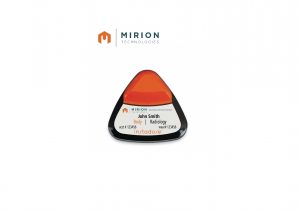
From Valeant to WorldCom, the list of firms with failed rollup strategies is long and ignominious. That makes any company pursuing a highly-active M&A approach an easy target for critics and short sellers.
But in the case of U.S. Concrete, it would be a mistake to assume the worst. And rather than be lured into a false narrative recently spun by a short seller, investors should know the facts.
The company emerged from bankruptcy after the financial crisis and has since rebuilt itself through a strategy of consolidation in the highly-fragmented concrete industry. Under the leadership of CEO William Sandbrook who took the helm in 2011, the company has completed more than 30 acquisitions of smaller operators in regions where it already had a presence.
The benefits to shareholders have been clear. U.S. Concrete’s adjusted EBITDA, a core measure of profits that includes acquisitions, has risen to $192 million in 2017 from $12 million in 2011. And since Mr. Sandbrook became CEO in August 2011, the stock has risen six fold.
Why has U.S. Concrete’s strategy worked? The key is that the company can use its scale to make acquisition targets more profitable immediately after purchasing them. To make concrete, it’s necessary to purchase raw ingredients from companies such as Vulcan Materials Company. Given U.S. Concrete’s size, it can negotiate superior pricing on those purchases, boosting margins at the newly-acquired companies.
Of course, suppliers like Vulcan aren’t happy about reducing prices. But given U.S. Concrete’s prodigious purchase volumes, suppliers simply can’t afford to turn the company away.

What’s more, the company is focused on large, dense metropolitan areas like New York City and Dallas-Fort Worth where demand is robust and the company has a chance to consolidate a large number of concrete plants. In the New York City area, for instance, the company had one plant in 2015 but now has 17. That was possible through the acquisition of six companies: Greco Brothers Concrete, Nycon Supply Corp., Jenna Concrete Corp., Kings Ready Mix Inc., Colonial Concrete Co., and Ferrara Bros. Building Materials Corp.
Barriers to entry in areas like New York are very high, in part due to extensive permits required to set up a new concrete operation. That means the risk of fresh competition remains low.
Another important transformation usually occurs after a deal is completed. When U.S. Concrete purchases a rival in an adjacent geographical area, it quickly becomes obvious that certain routes and work sites are better served by one company than another. That means some jobs being done by the target company will be switched over to U.S. Concrete and vice versa, leading to efficiencies.
Such job-switching means organic growth and M&A are closely intermingled and it’s impossible to separate them quantitatively. That said, the company does report organic unit volume growth in the upper single digits, indicating the business expands on its own even without dealmaking.
Naturally, it’s important to keep leverage manageable. Like many other companies that borrowed too much ahead of the financial crisis, U.S. Concrete learned its lesson the hard way and went into bankruptcy.
But the company is being careful not to bite off more than it can chew. While U.S Concrete will bring its leverage up to complete a deal, synergies are realized quickly. At the moment, the company has net debt equal to 3.0 times 2018 consensus adjusted Ebitda, which is within its comfort zone. As time passes, the leverage will gradually come down. By comparison, industry peer Summit Materials has leverage of 3.3 times by the same metrics.
Also, the company has a very conservative debt maturity profile, with most of the big maturities several years away. Equally important, there are no maintenance covenants on the debt, so if leverage ticked up in a recessionary environment it would not put the company into jeopardy with creditors.

Another misconception investors should avoid is that the company has been paying ever-higher prices for its equipment. When the company emerged from bankruptcy, an accounting rule required it to assign a value to its property, plant, and equipment that wasn’t based on the value of the trucks and mixers themselves. The value wound up appearing far lower than a single truck would actually cost – just $19,000. So as the company purchased new fleets at market prices, the average price naturally has risen toward a realistic number.
Investors should also see through thinly-veiled attempts by a short seller (who never contacted the company) to impugn Mr. Sandbrook’s integrity. The West Point graduate spent 13 years in the military, earned four Master’s Degrees including an MBA from Wharton, and spent two decades as an industry executive before joining U.S. Concrete. The notion that someone with such credentials at a late stage in his career would cook the books is a stretch.
Of course, U.S. Concrete stands to gain from a national infrastructure spending bill – a key goal of President Trump. Street, highway and public works projects accounted for 18{efe5d79870c08482e17ab0c97855f89429dac5f22c46026d3ca83573faec2208} of the company’s revenue in 2017.
But investors need not worry about Trump getting that deal done. Even without a national infrastructure plan, state initiatives in Northern California, where U.S. Concrete does a quarter of its business, already promise to provide a steady pipeline of work for years to come.
U.S. Concrete’s stock is nearly 30{efe5d79870c08482e17ab0c97855f89429dac5f22c46026d3ca83573faec2208} off its high and trades at a reasonable enterprise value of 7.4 times consensus Ebitda. With a proven strategy in place and risks kept in check, there is an opportunity for investors who have done their homework.
Contact:
Editor@RegAResearch.com







